Search

The Crushing Evolution!
What are the key criteria sought by operators of crushers and screens? And how do modern models differ in their features and capabilities?
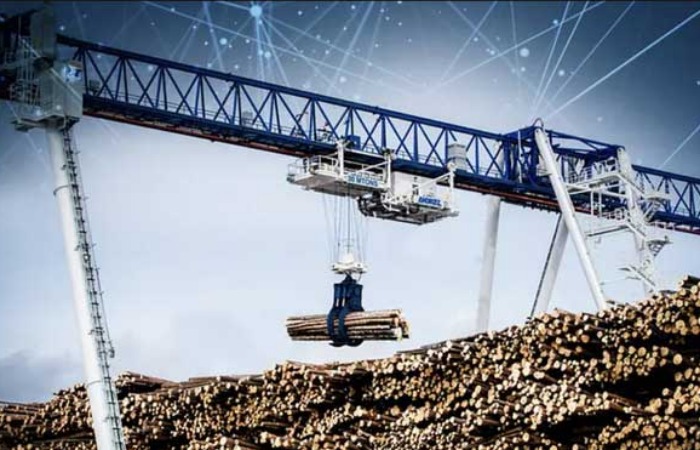
Andritz presents world’s first autonomous logyard crane
Under the motto “Building the Future Together”, ANDRITZ will be focusing on innovative technologies that enable customers to save energy, water, and raw materials in addition to reducing production costs and increasing product quality.

India offers a huge opportunity for the growth of the CE industry
Ammann is a world-leading supplier of mixing plants, machines and services to the construction industry with core expertise in road building and transportation infrastructure. Anand Sundaresan, Managing Director, Ammann India, speaks on the various technological display during Excon.
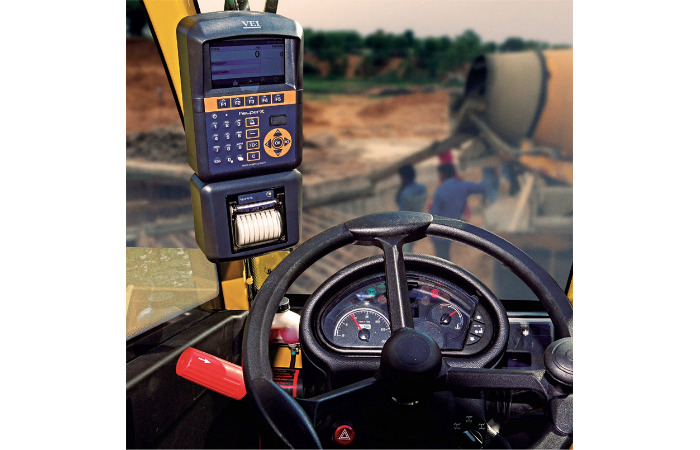
Concrete-Mate for perfect Mix-Design control
Carmix brings out continuous technical innovation and the development of digital technologies that simplify on-site operations
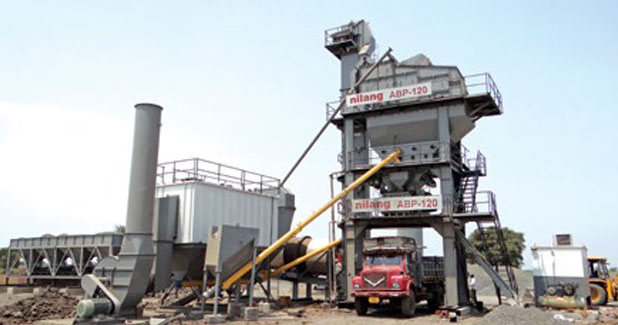
Choosing the right asphalt plant
When the moment arrives for the entrepreneur to make his decision to purchase an asphalt plant, he may leave it up to the suppliers to help decide on the best layout and configuration.

Recycling Economically
Time is money, especially in road construction. When it comes to cost efficiency, being able to put all equipment to maximum use is a critical factor. Consequently, it is a major advantage when a machine can be used flexibly, like the 3800 CR recycler from Wirtgen, which can use the up-cut and down-cut cold recycling processes or operate as a high-output milling machine.

Construction enabler
India is on a fast track to develop world-class infrastructure in the country. Commencing with road sector wherein a construction speed of 40 km a day has already been achieved, plans are afloat to take it to 100 km a day. Similar traction has begun in other construction sectors like canals and more will follow.

Efficiency Matters
Globally, the past decade saw amazing developments in the hot- mix production technology. In India too, with the entry of global players, OEMs have geared up to offer advanced plants that can produce a variety of mixes - be it low energy / low-temperature asphalt mixes, warm / cold mixes, high percentage RAP mix, high recycling technology
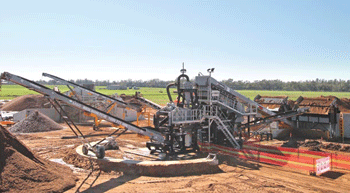
First AggreSand on Australia Shores
Mineral Washing Systems (MWS), Terex Washing Systems (TWS), distributor in Eastern Australia, recently installed the first AggreSand? washplant in the Australian market, located at Dubbo Sands Quarry, NSW.

Re-defining Productivity
Marini users confess one thing - Marini is an absolute delight to work with. Project managers like Ganesh Rao, operating a Marini in Kolkata, has been facing tough weather conditions ever since they commenced their project. The annual precipitation range, due to heavy rains has been around 925 mm.
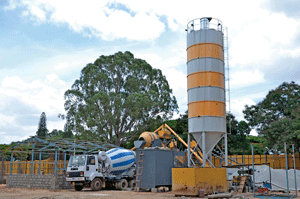
Batching solutions
The recent Budget has brought back smiles to many stakeholders of various verticals; however, the key seems to be implementation on the ground level. On a positive note, VG Sakthikumar, Wholetime Director - Operations, Schwing Stetter India, says, ?Definitely there is a positive movement.
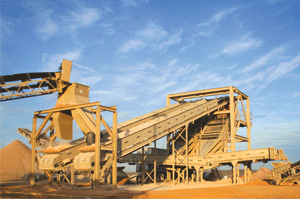
M-sand to Drive Growth
Sand is mixed with cement and water in measured quantity to produce concrete. These sand particles should be hard and inert with respect to cement. Due to huge silt deposition in riverbed and continuous mining of riverbed for sand,

SCCL revises up price of coal
S Vivekanand, Director (Finance) of Singareni Collieries Company (SCCL) informed that the firm raised the price of coal across different grades by an average Rs 18 per tonne. In 2012-13, SCCL produced 53 million tonne (mn t) of coal against the target of 54 mn t. The company has 50 c

JCB manufactures products which are robust, custom built and highly fuel-efficient.
JCB offers a world class vibratory soil compactor VM115 and a recently launched 9 T Tandem Roller VMT 860, which are specifically used for road projects. These machines are built specially for Indian roads and are amongst the best at compaction, says Amit Gossain, VP - Marketing & Business Development, JCB India. Excerpts from the interview.

Compacting Technology Set to Improve
The new trend in technology is faster compaction by achieving the required density at a lower operating cost. Also, the latest equipment is designed with features to improve operator safety, comfort and maintainability.

EIEL shall be procuring a lot of road equipment
Using compacters we can achieve around 102 per cent MDD whereas the yellow book of the Indian Road Congress states that the desired density for soil is 95 to 98 per cent, says Joy Saxena, Group Chief Financial Officer, ERA Infra Engineering.

Caterpillar has vibratory soil compactors in the operating weight range of 4.5T?18.5T
The popular model being offered in India is the CS533E (11T Class) which is required to meet the National Highway Project requirements in India,? says Pankaj Dara, Associate Vice President - Construction, TIPL. 0 - - 15633 14 102 2011-05-02 00:00:00.000 Equipment India Hamm is the technology leader in compaction equipment
?Our existing manufacturing facility can produce 400 machines annually and plans are on for further expansion in the coming years,? says Girish Dixit, Head - Engineering & Design, Wirtgen India. In a freewheeling chat, Girish speaks about the industry trends.
Tell us about the range offered in compaction equipment and also their unique features?
Wirtgen India offers Hamm-11T soil compactor, 9T asphalt compactors and 24T pneumatic tyre rollers (PTR) for the Indian market. Hamm compactors come with German design and technology mainly featuring excellent operator comfort and safety. The equipment are powered by a fuel-efficient and highly durable water-cooled engine.
Hamm is the technology leader in compaction which has been awarded many design prizes for its latest innovations. Recently, it was awarded iF-Gold award 2010 also called the Design Oscar for new HD+ series of asphalt compactor. The GRW 280, rubber-wheeled rollers received the iF Design award 2010.
Higher quality level of the components used in Hamm compactors increases the durability of the equipment. Better serviceability and reduced maintenance frequency with less fuel consumption results in the lower operating cost of the equipment.
What is the existing manufacturing capacity for these product lines?
Our existing manufacturing facility can produce 400 machines annually and plans are on for further expansion in the coming years.
What is the rental scenario for these products?
Currently, Wirtgen India is not in the rental market and is only selling the new equipment in the retail and corporate segments, rental companies.
Are these products compliant with the Bharat stage III emission norms?
Yes, the equipment built after April 2011 will comply with Bharat stage III emission norms.
How do you look at the replacement/ repowering market for the units sold which are not complying with Bharat stage III norms?
As per the regulations, no replacement/re-powering is required for the units built with Bharat stage II norms.
Why vibratory compactors over static ones and what is the vibration effect in compaction over the static loading?
Vibratory compactors develop dynamic force in addition to the static load and total applied force is the sum of dynamic force and the static weight of the machine. For example, Hamm 11T soil compactor generates 24T dynamic force and with 6.8T static weight at the drum will induce 30.8 tonne load on the ground. The advantage of using 11T vibratory soil compactor versus 30 tonne static compactor is evident from this.
The vibratory compactor with drum vibrating at higher amplitude will result in compacting the higher lift thickness and achieving the required density compared with the static roller. In the static roller, the linear load is not uniform over the width of the machine (one front roller and two rear rollers) which results in uneven mat finish. In the vibratory compactors, the linear load is uniform along the width of the drum.
To what extent do soil conditions determine the selection of compactors? Could you tell us the reasons?
Type of soil and conditions like moisture content decides the achievable density within the required number of passes. It is important to select the suitable compactor which will develop the required force to achieve the density with lesser number of passes on the appropriate lift thickness.
What determines the maximum achievable density?
Density depends on the soil characteristics (type of soil) and optimum moisture content (OMC) present in the soil. Generally, 95 to 100 per cent density can be achieved with 11T soil compactors on the appropriate lift thickness.
?To have maximum return on investment, the equipment should have maximum productivity and less rework,? says SM Roy, Chief Executive Officer, Lanco Infratech. In an exclusive chat with Equipment India, Roy elaborates on the evolution of compacting and grading technologies. Excerpts from the interview.
How, over a period, have the methods of compaction and grading evolved and to what extent does the contracting fraternity use the advanced equipment and methodology?
The first road roller was horse-drawn; this was followed by steam and diesel rollers. For a long period, static compactors of various sizes were used. The introduction of vibratory compactor in 1946 opened a new era in construction industry.
A few decades ago, grading was done manually or with tractor dozers where operator skill was important for accuracy. Advanced technology has made the grading work simple by giving option of automatic slope and elevation offsets. GPS navigation and machine guidance systems have reduced the amount of external surveying required.
Almost every construction project or site preparation requires some kind of grading and compaction. The Indian contracting community extensively uses the graders and compactors for various purposes based on size and extent of projects.
Why vibratory compactors over static ones? What is the vibration effect in compaction over static loading?
Static compactor functions with its own weight and hence compaction is confined to the top soil layer. Vibratory compactors use a mechanism to create a downward force in addition to the machine's static weight thereby affecting the top layers as well as deeper layers. Vibration moves through the material, setting particles in motion and moving them closer together for the highest possible density.
To what extent does the soil condition determine the selection of compactors?
The desired level of compaction is best achieved by matching the soil type with its proper compaction method. Clay is cohesive; its particles stick together requiring high impact force to compact. Hence, the sheep-foot roller is the best choice. Best compaction of granular soils is possible with shaking or vibratory action. For mixed type of soils, it is a good idea to choose the compactor appropriate for a larger percentage of the mixture.
What is the return on investment on a compactor and on a grader?
To have maximum return on investment, equipment should have maximum productivity and less rework. Production cost depends on depreciation, maintenance, fuel, working hours and labour. Smaller machines cost less in terms of ownership but more in labour and vice versa. In general, for each situation, one should study equipment productivity and try to strike a balance to get better value for money.
Could you tell us about the density achievable from the range of compactors? What determines the maximum achievable density?
The maximum achievable density depends on fill type, compactive efforts and moisture content and it varies from 2.1 tonne/cu m for well graded gravels to 1.5 tonne/cu m for highly plastic clays. Most of the compactors can achieve maximum fill density with different compactive efforts and efficiencies.
What are the variants in compaction?
The variants in compaction are soil type, moisture content, lift or fill thickness, compactive efforts or number of passes of compactors.
Selection Criteria:
A selection criterion for graders and compactors is given below:
? Size, weight and machine power.
? Steering, direction control and maneuverability.
? Functional automation.
? Multi-tasking machine with various attachments.
? Maximum possible thickness of the lift (for grader).
? Accuracy of the grading (for grader).
? Range of vibration frequency (for compactor).
? Working and downtime.
? Ownership and maintenance cost.
? Availability of trained manpower to use the machine.

A 100 per cent density can be achieved using either 10T or 18T vibratory rollers
?With the help of vibratory rollers, the degree of compaction is better (95-98 per cent) achieved than with the static ones.

Vibratory Compactor Vs static
Agith G Antony finds out the technical aspects of compaction from Pradeep Kathuria, Head -Essar Equipment Bank, Essar Projects India.


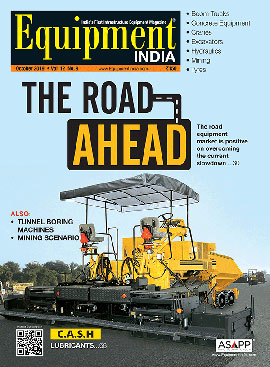
 +91-22-24193000
+91-22-24193000 Subscriber@ASAPPinfoGlobal.com
Subscriber@ASAPPinfoGlobal.com